Konftel Cam20 review: a compact 4K quality conference camera
The Konftel Cam20 keeps things simple on extra features but it’s an excellent camera with top environmental credentials
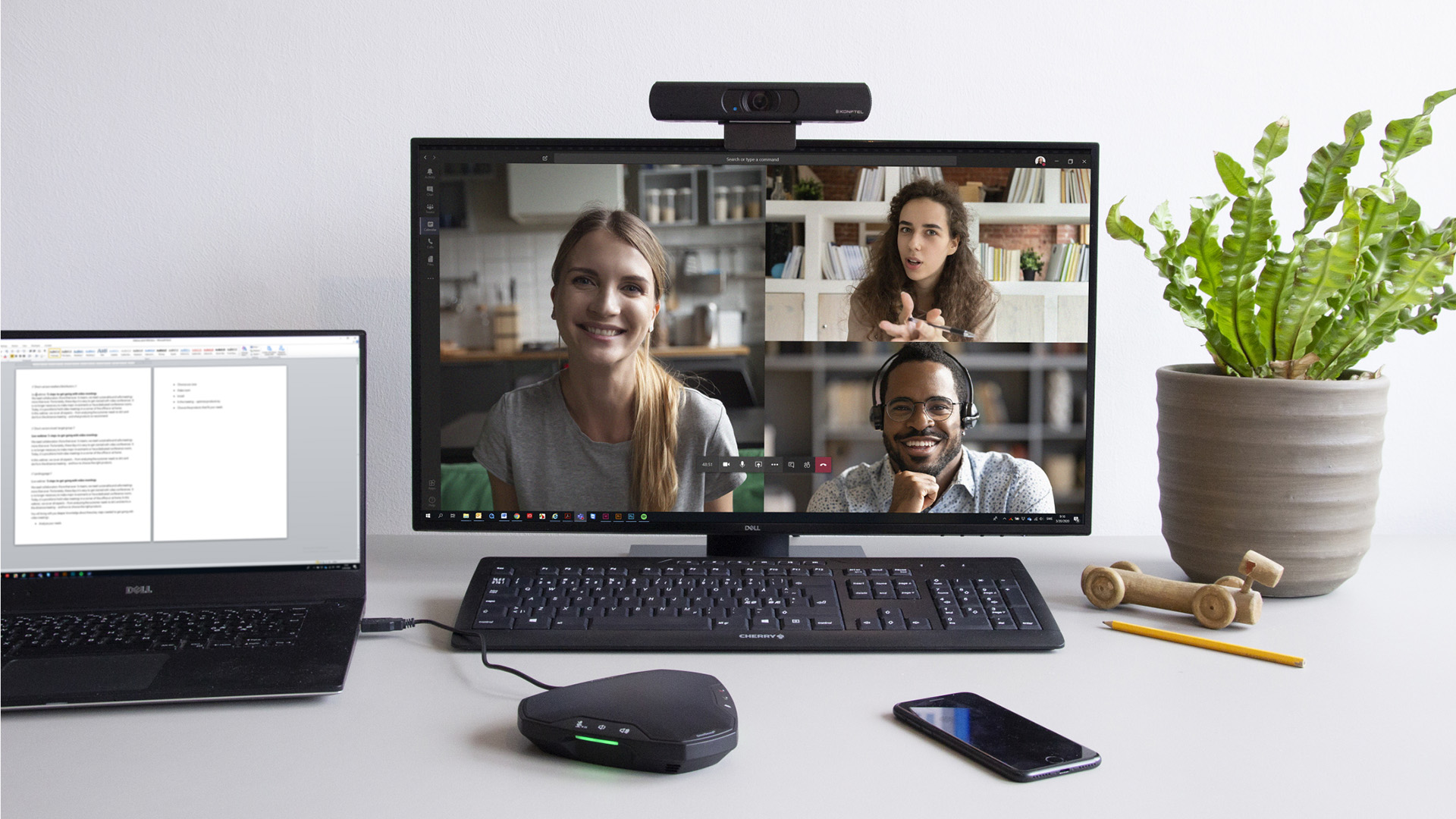
The Konftel Cam20 is a very powerful 4K webcam with built-in pan, tilt and zoom features and remote control that works well with any video conferencing software on your laptop or desktop PC.
-
+
Does not require drivers or special software
-
+
Excellent video quality
-
+
Electronic Pan Tilt Zoom works very well
-
-
Microphone is disabled by default
-
-
No speakers for audio
Why you can trust T3

Konftel Cam20: specs
Image resolution: 3840 by 2160 pixels
Video Resolution: 4K
Video encoding: YUY2, MJPEG, H.264, NV12
Diagonal Field of View (FOV): 123°, 8X digital zoom
Focus Type: Auto
Mounting Options: Monitor top, tripod socket
Connection: USB 3.0 (16 ft. cable)
Konftel is a new name on the video conferencing scene, but the Swedish company has an interesting approach. All of its products are climate neutral, created using recycled materials, and with all of the emissions offset. The Cam20 is a 4K camera designed for use with a PC or Mac computer that, like the best video conferencing cameras, works out of the box without requiring any drivers. The electronic pan-tilt-zoom (ePTZ) features are handled by the camera itself. That means it should work with any platform and conferencing app that can use a standard webcam.
Konftel CAM20 review: price and availability
The Konftel Cam20 costs $180/£235/AU$443 for the camera alone or $373/£325/AU$615 for the C20Ego kit with the speakerphone and USB hub. The camera-only kit includes the camera, the dedicated remote control and a very long 16-foot USB 3.0 cable.
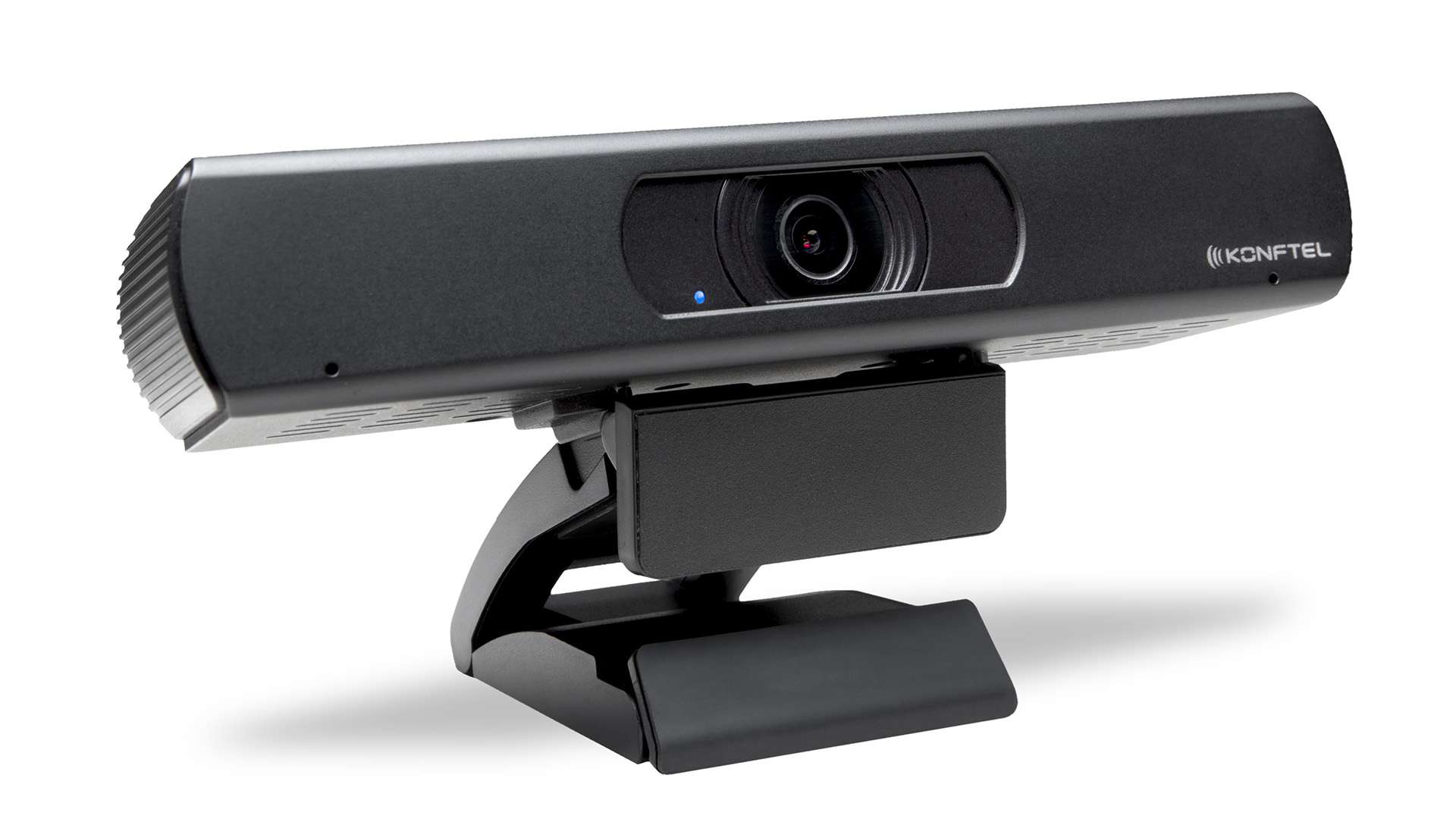
Konftel CAM20 review: design and build
The Cam20 is a small camera that’s designed to sit on top of a monitor or TV in a small conference room. It is larger than most consumer webcams, measuring 7.6 inches wide and 1.6 inches deep. On the bottom of the camera is a large adjustable stand that has three points of articulation to fit monitors and TVs small and large.
I found it very easy to mount on both a thin TV and a more chunky monitor. On the bottom of this is a tripod socket, so you can also mount it on a tripod or other stand. On each side of the front of the camera are two small holes for the microphone that captures stereo sound. The included 16-foot USB 3.0 cable is a big plus for anyone who has struggled with trying to stretch a cable in a conference room using a laptop to make video calls.
The remote looks like the sort of thing that would come with a modern TV, with lots of buttons. However, these are dedicated to the camera itself, with functions like zooming in and out at slow or fast speeds, plus presets for the pan tilt zoom (PTZ) control or switching between multiple cameras (up to four) connected to the optional Konftel USB hub.
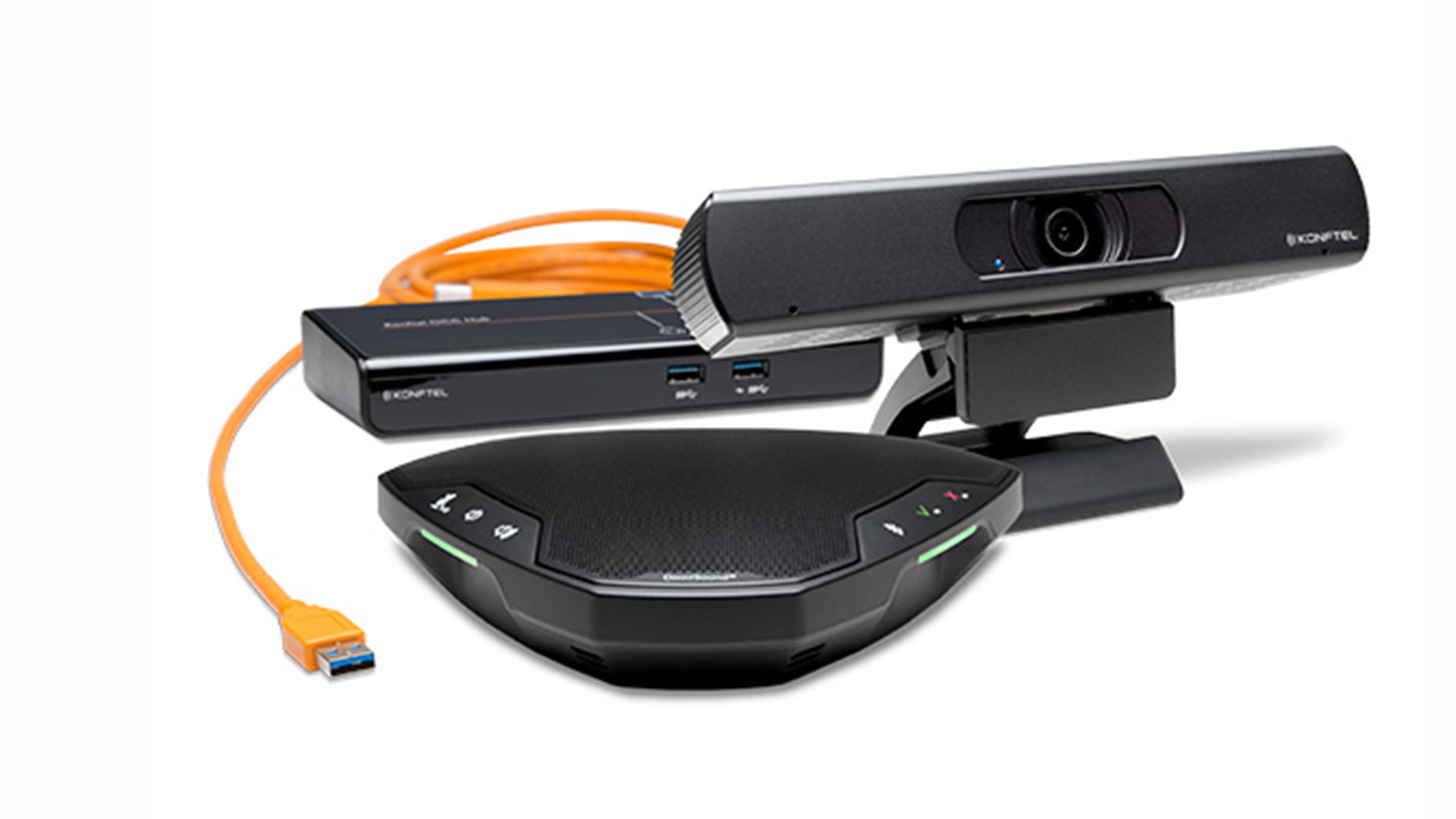
Konftel C20Ego kit
Konftel CAM20 review: setup
The Cam20 was a breeze to set up. Just plug it in, wait for Windows (Windows 8 or higher) or Mac OS to detect it, put a couple of AAA batteries in the remote and you are good to go. You don’t need to install any special drivers or other software, as the camera itself is smarter than most and handles the features.
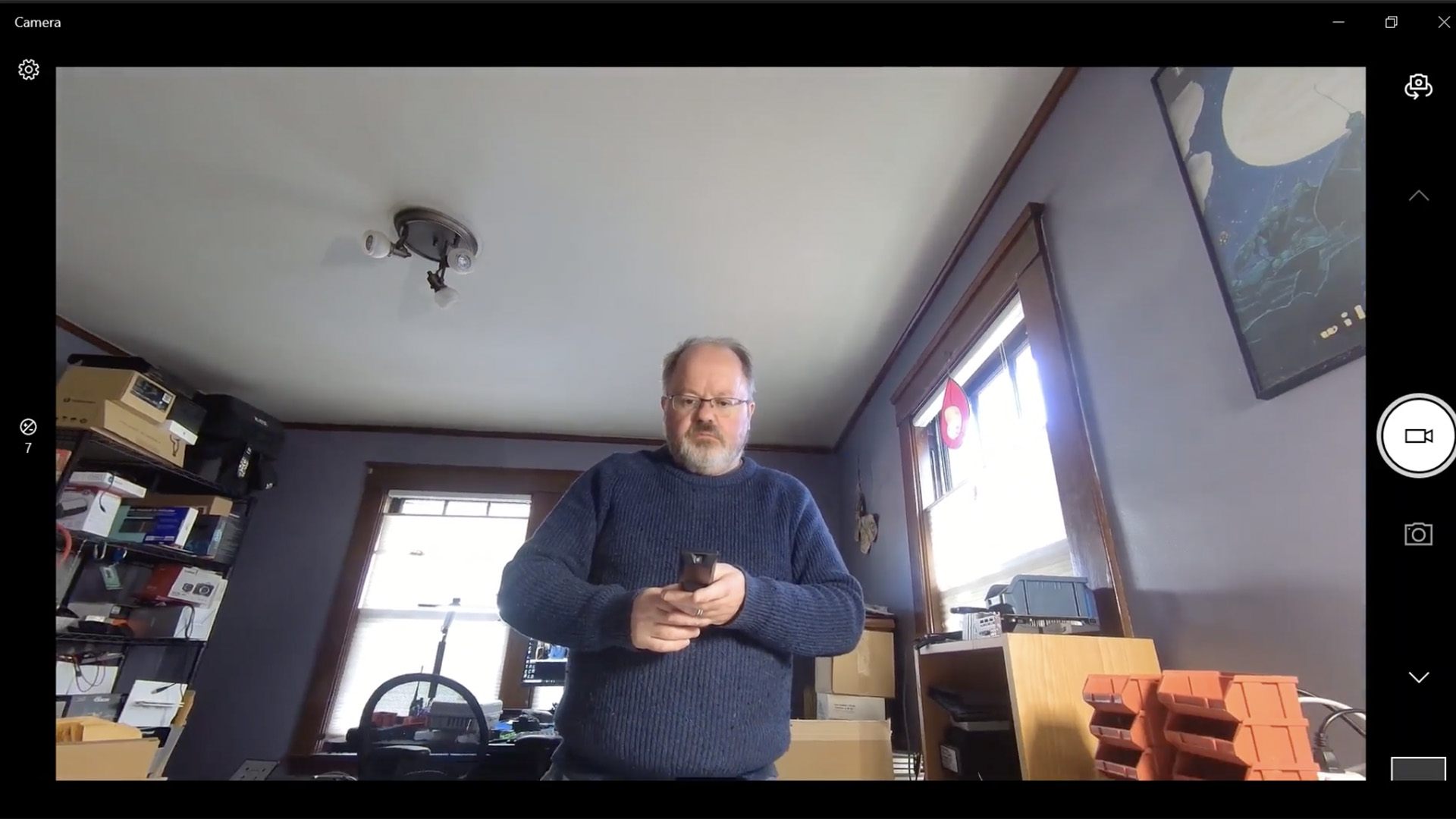
Konftel CAM20 review: performance and accessories
The Cam20 worked right out of the box. I was able to use it within about 30 seconds of plugging it in. It worked flawlessly with Zoom, Skype, Google Meet, and other video conferencing apps, capturing pin-sharp video that looked great. The field of view is an impressively wide 123 degrees, which is wide enough for a small table of people without distortion.
Although few video conferencing apps support 4K video, the advantage of having a 4K camera is that you can zoom in on the video and still keep the video sharp. The Cam20 offers an 8x digital zoom that does this on the camera itself, controlled by the remote, and I found that the video was still very sharp when zoomed right in.
The combination of this digital zoom and the remote could be very effective for video presentations: you can go from a wide view of yourself to a zoomed-in detail of the product you are presenting with the touch of a button on the remote, which won’t interrupt your flow.
The one thing that is missing here is a microphone – one is built into the camera itself, but it is disabled by default. When enabled, this microphone is adequate, but lacks noise or echo canceling. If you are looking for an all-in-one setup that offers better sound, Konftel offers the C20Ego kit, which includes the Cam20 camera, the Konftel Ego Bluetooth speakerphone, and a USB hub. One nice touch of this is that the display and camera plug into this hub, so you only need one connection to the computer for video, audio and the display. That’s a big plus for getting into a conference quickly, as it cuts down on the number of cables to find and use.
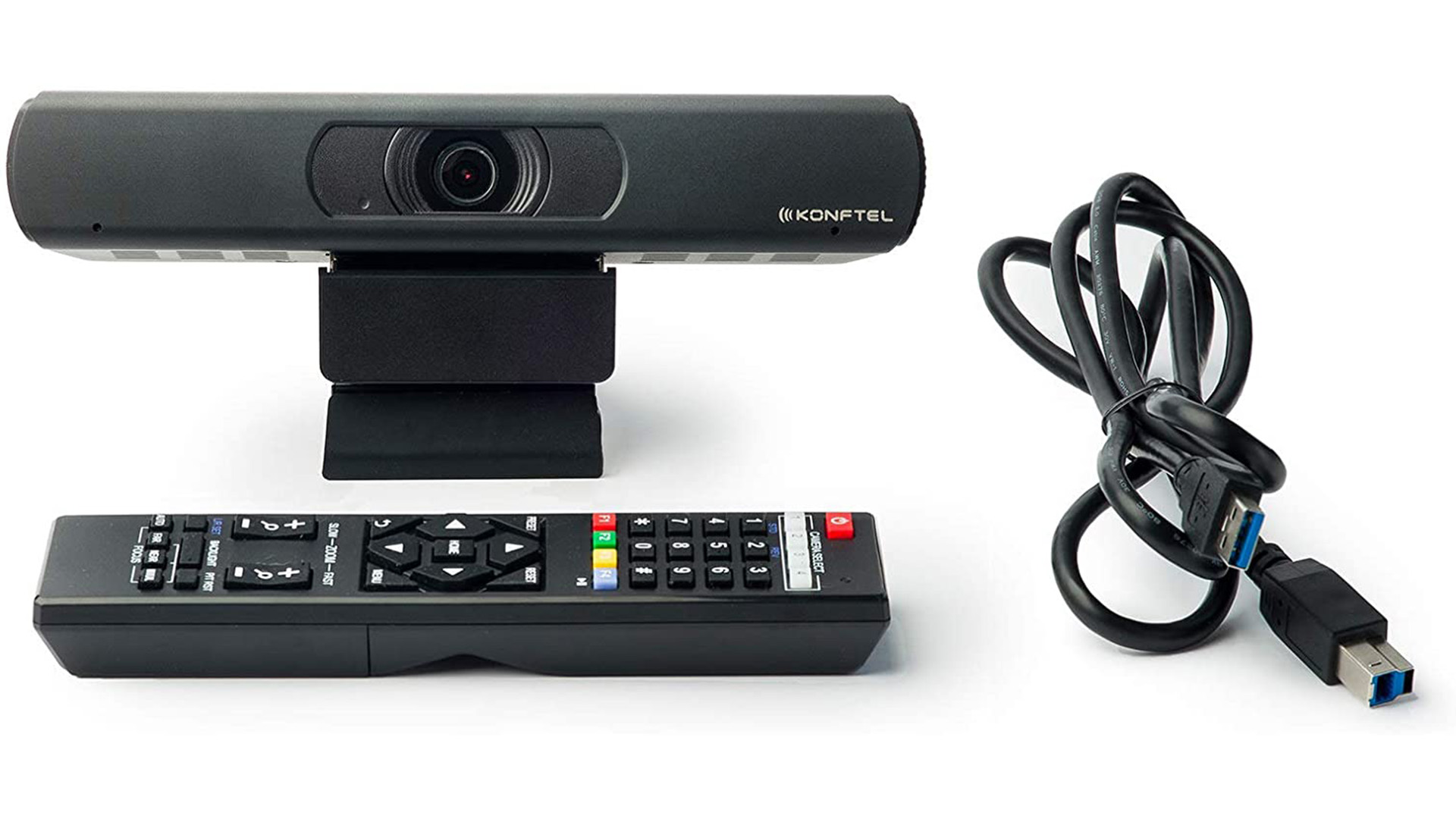
Konftel CAM20 review: verdict
The Cam20 is a step up from the usual webcam. The extra features it offers will definitely save time and hassle, and it produces great quality video. As anyone who has struggled with trying to find drivers and software for video conferencing, 30 seconds before the meeting starts, will attest, the lack of drivers is a big plus. The excellent video quality and extra features will also add a more professional look to your video conference, with the ability to zoom in while maintaining the image quality and without having to fiddle with your laptop and lose the thread of conversation. So, it’s a great pick for those who video conference occasionally with their own laptop.
Konftel CAM20 review: Also consider
Most modern laptops come with video cameras built-in, but these tend to be of lower quality than the CAM20. The Dell Ultrasharp and Razer Kiyo are other options, both of which provide excellent image quality. Both lack the remote control features of the CAM20, though, which makes zooming in on the face much easier.
Sign up to the T3 newsletter for smarter living straight to your inbox
Get all the latest news, reviews, deals and buying guides on gorgeous tech, home and active products from the T3 experts
Richard Baguley has been writing about technology since the 1990s, when he left a promising career in high finance to work on Amiga Format magazine for Future. It has been downhill for him ever since, writing for publications such as PC World, Wired and Reviewed.com. He has tested gadgets as diverse as 3D printers to washing machines. For T3, he covers laptops, smartphones, and many other topics. He lives near Boston in the USA with his wife, one dog, and an indeterminate number of cats.
-
 Warning: Ciele’s refreshed Elite Collection may cause excessive garment envy on race day
Warning: Ciele’s refreshed Elite Collection may cause excessive garment envy on race dayFlex on your run crew with Ciele’s latest drop
By Matt Kollat Published
-
 Smeg adds a touch of navy sophistication to its iconic breakfast set
Smeg adds a touch of navy sophistication to its iconic breakfast setIt's a minimalist's dream
By Lizzie Wilmot Published
-
 My most anticipated Netflix movie of the year gets a wild new trailer
My most anticipated Netflix movie of the year gets a wild new trailerHavoc looks pretty unbelievable
By Max Freeman-Mills Published